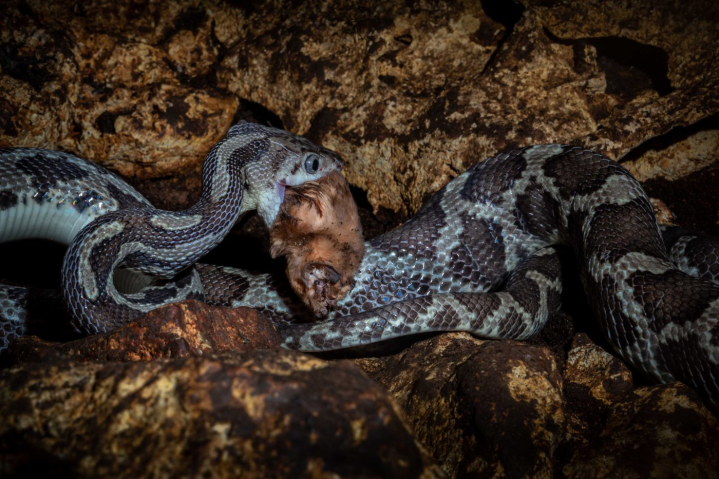Outside of the concrete and steel human world, the earth still holds wonderful, off-the-beaten-path or unexplored places, species and natural phenomena.
Cave of the hanging snake
On the other side of the world, in a cave deep in the heart of mexico's yucatan peninsula, thousands of central american whiskered bats spill out every night in the cold moonlight like a tidal wave, feeding on the flying insects of the surrounding forest.
The "Traffic" At the entrance of the cave is so heavy that it esembles the traffic on the main roads of the city. Although the bats do not travel as congested as the second ring road to a standstill, the speed inevitably drops.

If one were to give a name to this dwelling that seems to belong entirely to the bats, one would call it: The hanging snake bat cave.
Watchful attackers
Mexican night snakes are attracted to these flying mammals in seemingly unlimited supply, and the cave is like a revolving sushi rail for them, with a constant supply of food.

Mexican night snakes
The night snake is a family of wandering snakes and a genus of garter snakes, considered a rat snake (non-venomous) with an adult length of 1.8-2 meters. They have abandoned a life of chasing mice on the ground and have turned their attention to these "Flying mice".
Night snakes climb up the walls of caves and hang in the cracks of uneven walls and ceilings, just like the bead strings that hung in front of the street kiosks when i was a kid.

At night, the bats poured out of their nests, collisions with each other were commonplace, and the bats didn't care.
The night snake hangs there, waiting, for a certain bat whose orbit has deviated, or who has flown close enough after being hit by a fellow bat, to then strike a lucky fatal blow.
An extremely low success rate
The cave is so dark that these night snakes that live in bat caves are essentially completely blind and deaf.
And bats fly at least 50 kilometers per hour.
Scientists to this day have not figured out what these deaf and blind night snakes rely on to calculate the flight path of bats and then fling their attacks in total darkness.

Initial speculation is that these nocturnal snakes, which have evolved to rely almost entirely on eating bats, probably use the wagging of their tongues to sense the air vibrations of bats in flight, and rely on "Blindness" For the rest.
Their hunting success rate is quite low, so low in nature that it is frowned upon by their fellow snakes.
In a bat cave, scientists observed, and recorded, a suspected young, inexperienced night snake hanging there, making 200 unsuccessful attacks in an hour and forty minutes before finally eating a bat.

Mature, experienced adult snakes have an improved success rate.
There are no exceptions.
This seemingly unusual and inefficient hunting strategy is actually not uncommon.
There are at least 20 species of very distantly related snakes that enter caves in large cave-dwelling bat habitats around the world to hunt bats for a living.

Obviously, even though the odds of catching a flying bat with a single strike may be low, the bats are large enough (hundreds of thousands are found in large caves) and the cave is free of enemies that a patient snake would enjoy the environment.
Thus, snakes gradually adapt to the darkness of the cave, creating a delicate balance with the species in it.
There are three major benefits to snakes living in burrows: Constant temperature throughout the year; no one can leave the house every day, waiting for their prey to arrive at their mouths; and they are the boss here, without any natural enemies.


